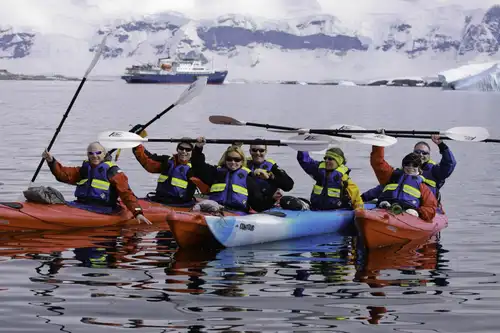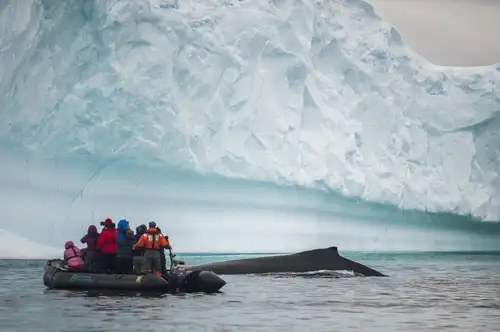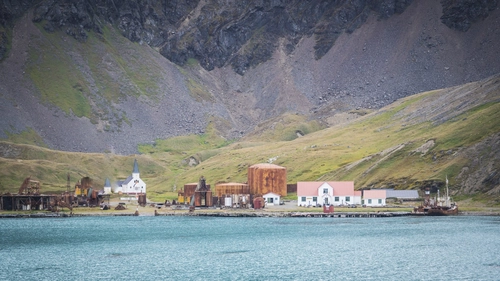Name: Black-browed Albatross, Black-browed Mollymawk (Thalassarche melanophris)
Length: 80 to 100 cm
Weight: 3 to 5 kg
Location: Southern Oceans
Conservation status: Near Threatened
Diet: Carrion, crustaceans, fish, offal, squid
Appearance: White body, grey to black wings, yellow-orange bill, and a distinctive black “eyebrow” above the eye
How do Black-browed Albatrosses feed?
These birds are opportunistic feeders, snatching food from others and following fishing trawlers for scraps. They mainly pick fish from near the surface but can dive up to 5 meters.

Are Black-browed Albatrosses social?
They often flock with their own and other species while feeding, but this is not purely social as they may try to steal food from each other.
How fast do Black-browed Albatrosses fly?
They can reach speeds of up to 110 km per hour, depending on wind currents.
What are Black-browed Albatross birthing rituals like?
Nesting sites are usually on cliff edges, except in the Falklands where they nest on flat grasslands. Breeding season is from late September to early November. They are monogamous, pairing for life. One egg is laid, and both parents incubate it for about 70 days. Chicks fledge after 4 months. Juveniles return to the breeding colonies after 3 years, but usually start mating at 7 years old.

How long do Black-browed Albatrosses live?
They can live over 70 years.
How many Black-browed Albatrosses are there today?
The population is estimated at over 1.2 million.
Do Black-browed Albatrosses have any natural predators?
Rats prey on their eggs and young, and rabbits can destroy their nesting areas by burrowing.

7 Bountiful Black-browed Albatross Facts
- They are the most common and widespread Diomedeidae family members.
- They produce stomach oil for defense and nourishment during long flights.
- A gland above their nasal passage excretes a saline solution to expel excess salt from their diet.
- The name "melanophris" comes from Greek words meaning "black eyebrow."
- They live mostly at sea, returning to land only to breed.
- About 75% of their population is found in the Falklands and South Georgia islands.
- Their flying heart rate is almost the same as when resting due to their excellent gliding ability.






Related Trips



The Giant Petrels of King George Island

Graham Land: A landscape dominated by volcanoes

A Day of Basecamp in Antarctica – Paradise Harbour

The Classic Polar Cruise: Antarctic Peninsula Facts, Pics, and More

Port Lockroy: History, Post Office, and Resident Penguins

The Emperor Penguin of the Drake Passage

Antarctic Explorer’s Voyage

Life in a Penguin Colony

Flowers in Antarctica

Living the Antarctic Dream

The Eight Albatrosses of Antarctica and the Sub-Antarctic

A Day of Whale Watching in Antarctica






 19 Days / 18 Nights
19 Days / 18 Nights





